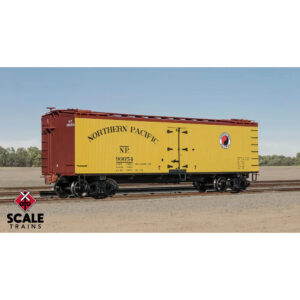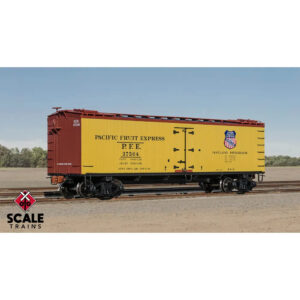40' PC&F Wood Reefer
Prototype Information
Ice reefers, built of wood, typically had 4 rooftop hatches at each end. There, ice was loaded into bunkers, usually at specially built structures called icing platforms. Cool air circulated over the ice and throughout the car, keeping the contents cool. Depending on the shipments, cars might have been “pre-cooled” before loading to keep the products from being loaded into an already warm car. This helped keep the product cool for longer periods of time while using fewer ice.
Typically, ice reefers needed to be topped-off with fresh ice at least once a day. Because of this, icing stations were erected along mainlines around the country, usually located at or near water tanks (for fueling steam locomotives). If a shipment did not need refrigeration, the car could be used for a dry shipment just like a standard boxcar.
Initial cars were built entirely of wood. By the early 1900s, reefer cars were typically constructed with wood bodies while being reinforced by steel at the ends and roofs. This strengthened the overall structural integrity of the cars. While all-steel cars started appearing in 1936, wood cars could still be seen through the 1950s and 60s.
Showing all 2 results
-

Scale Trains HO Fox Valley Models 40′ PC&F R-40-2 Wood Reefer Northern Pacific
$32.00 Select options This product has multiple variants. The options may be chosen on the product page -

Scale Trains HO Fox Valley Models 40′ PC&F R-40-2 Wood Reefer Pacific Fruit Express “SP & UP Logo”
$32.00 Select options This product has multiple variants. The options may be chosen on the product page


